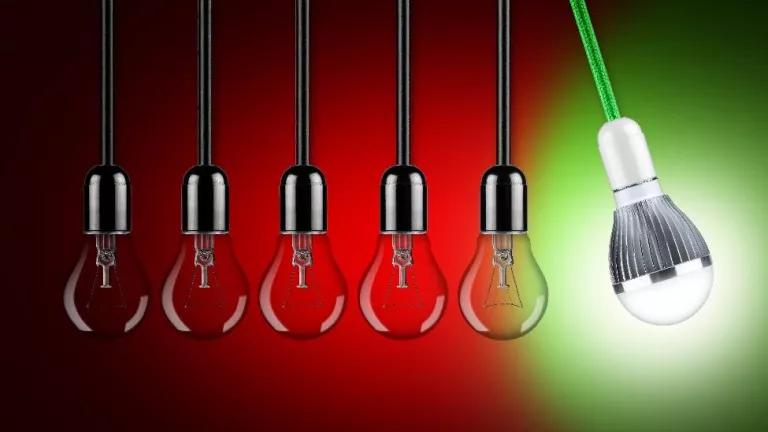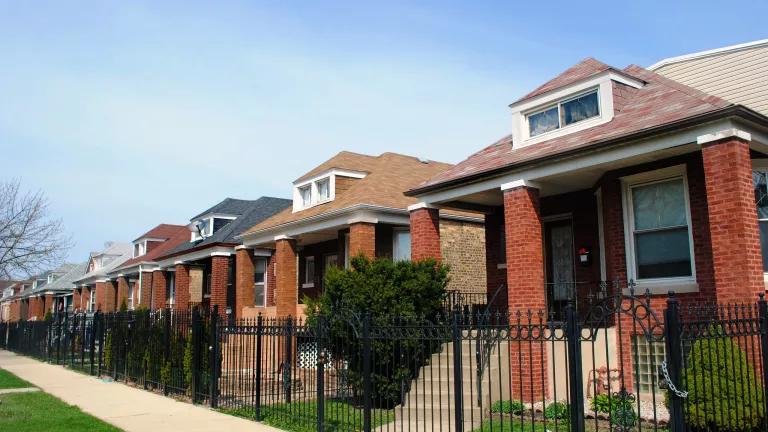
Today the U.S. Department of Energy (DOE) announced that it is issuing two important regulations that will make the nation’s lightbulbs much more efficient, saving consumers money and reducing climate-warming carbon pollution at the same time.
The rules collectively require common, everyday bulbs to meet a minimum efficiency level of 45 lumens per watt and ensure that loopholes won’t allow inefficient bulbs to bypass this limit. Effectively, it means that commonly used bulbs will be LEDs. Once fully implemented these rules will save consumers $3 billion annually in utility bill savings while avoiding 222 million metric tons of carbon emissions over the next 30 years.
Many people are familiar with old-fashioned incandescent light bulbs. These bulbs use electricity to heat a wire to the point that it starts giving off light. Importantly, much of the electricity is wasted as heat.
Modern light bulbs use light emitting diode technology, more commonly known as LEDs. These bulbs use a small fraction of the energy of an old-fashioned bulb and they last much longer. Incandescent bulbs typically burn out after about a year, but LEDs can last 10 years or more. While LEDs can cost slightly more than less efficient bulbs, they typically pay for themselves in less than a year based on the reduced energy consumption alone.
Background
Today’s rules undo harmful and illegal actions undertaken by the Trump administration.
The 2007 Energy Independence and Security Act (EISA) outlined a plan for the agency to phase out the sale of inefficient light bulbs. If DOE failed to establish a strong efficiency requirement on its own, a backstop energy efficiency standard at the level of 45 lumens per watt (LPW) would go into effect on January 1, 2020. The Trump administration flouted this requirement when it issued a “final determination” in late 2019 declaring that it would not go forward with improved efficiency standards for the bulbs that fill roughly 6 billion U.S. sockets.
In addition, EISA required the Department to review the list of bulbs that were initially exempted from compliance with 2007 GSL standard. In early 2017 DOE published an updated definition that brought unconventionally shaped light bulbs—roughly half of all household bulbs—into the standard’s scope. However, in 2019 the Trump DOE reversed that 2017 decision, reopening the loophole and allowing several types of bulbs to avoid compliance with stronger standards.
NRDC, along with other consumer and environmental groups, sued to block these harmful rules; a coalition of states filed a similar suit.
Conclusion
As President Biden has made clear, now is the time for bold action on climate change. Today’s rules help fulfill a commitment to review the harmful actions undertaken during the Trump administration, a boon for both consumers and the environment.




